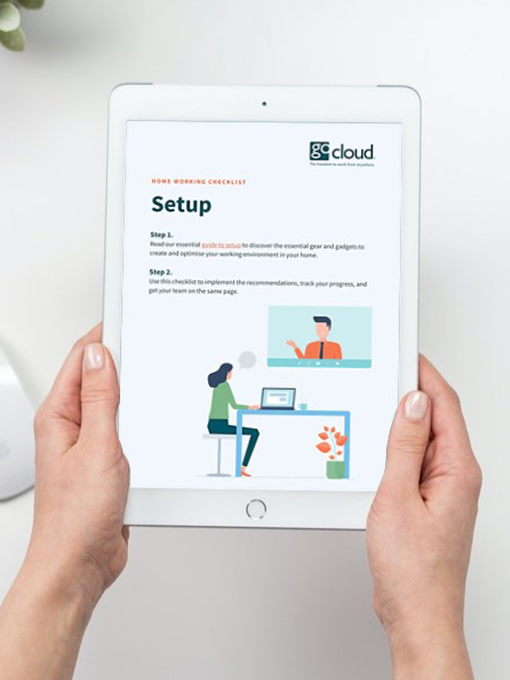
Resources
Get
Instant Quote
Straight to your inbox. No sales call.
Setup
Read our top advice to make the transition to home working as simple and effective as possible.

If you'd asked a bunch of business owners back in 2019 whether they'd consider remote working as an option, the majority of them would have said no.
This wariness was simply down to a fear of change, which led to the assumption that productivity would suffer enormously if employees were allowed to work from home.
The solution is twofold and actually very easy to achieve: implement the right technology and trust your people.
Chances are you've had some staff working from home over the last year or so.
Though they may have returned to the office, it's time to think about offering them the opportunity to work remotely either on a regular basis or simply when the need or desire arises.
By switching to hosted desktops, your day-to-day operations will continue seamlessly and suddenly have a much greater ability to adapt and grow.
When you allow your staff to work remotely and show belief in their commitment to their roles, you'll find that workflow becomes stronger than ever.
It can even lead to an increase in output, as giving people
their own space to get work done can inspire exceptional
results.
Accommodating a range of needs is the hallmark of a strong company that cares about its staff.
When you pay attention to what makes each individual employee tick, you gain insight into how to create the perfect work setup.
It's rarely a case of one size fits all, so be prepared to adapt and remain agile.
Some team members will have no quarrel with home working and actually prefer it to being based in your commercial premises every day.
Don't take this personally, as everyone works in different ways and has their own preferences.
Flexibility is seen as a huge perk by many office workers -
don't underestimate the power of combining office-based roles
with remote working capabilities.
The key is to decide how much home working will be allowed and
how to make it a fair system. For instance, you could adopt any
of the following approaches:
Whilst some people have always wanted to work from home, others require the hustle and bustle of an office in order to stay motivated.
The key is to help your employees create a routine, use communication tools that fit your requirements, try out different methods of collaboration, and establish a system that suits your business and its staff.
As with when you're based within commercial premises, your workflow and productivity are dependent on consistency and efficiency.
If you're the type of person who needs a quick chat with a co-worker every hour or so to stay upbeat, there's a way to incorporate it into your day when working from home.
If you'd rather knuckle down and block out all distractions,
remote working makes this very easy to achieve too. Trial and
error can take a while but it really does pay off.
If there's one thing that's absolutely certain to enhance the way you and your staff work from home, it's hosted desktops from GoCloud. To find out more, get in touch on 01482 751133 or email hello@gocloud.co.uk.
Download your free home working setup checklist to get you and your team ready to work remotely.
Setup ChecklistDownload your free home working setup checklist to get you and your team ready to work remotely.
